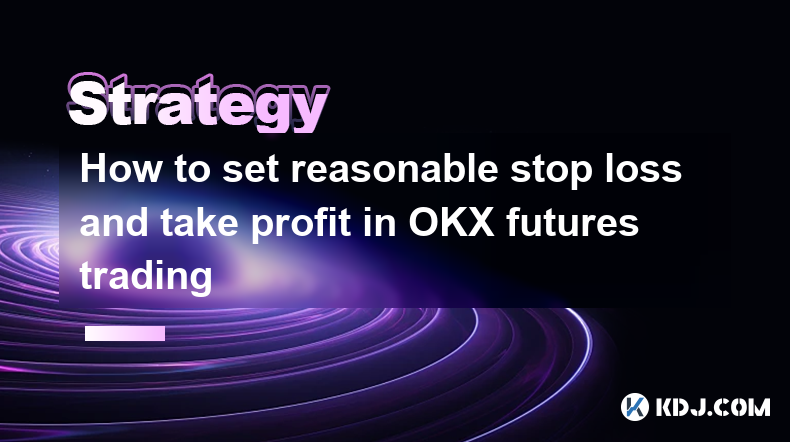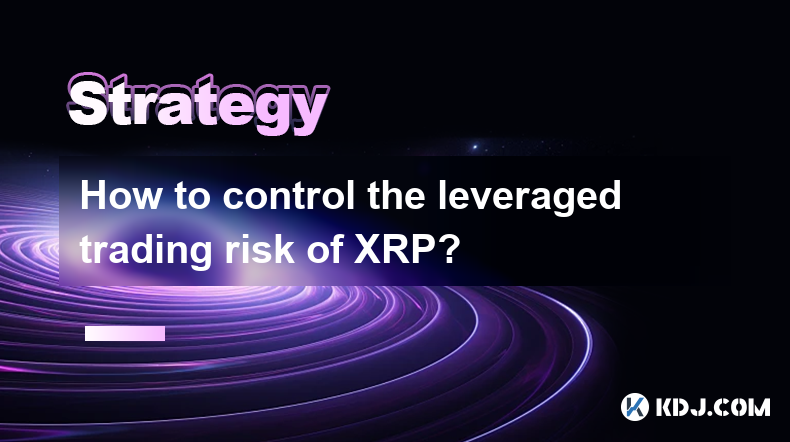-
 Bitcoin
Bitcoin $84,514.1750
0.43% -
 Ethereum
Ethereum $1,592.3644
0.42% -
 Tether USDt
Tether USDt $0.9999
0.02% -
 XRP
XRP $2.0784
-0.80% -
 BNB
BNB $592.3913
0.98% -
 Solana
Solana $134.5627
2.18% -
 USDC
USDC $0.9999
0.00% -
 Dogecoin
Dogecoin $0.1566
0.70% -
 TRON
TRON $0.2435
-1.92% -
 Cardano
Cardano $0.6196
0.09% -
 UNUS SED LEO
UNUS SED LEO $9.1443
0.41% -
 Chainlink
Chainlink $12.6177
1.51% -
 Avalanche
Avalanche $19.1279
-0.07% -
 Toncoin
Toncoin $3.0098
1.82% -
 Stellar
Stellar $0.2440
2.00% -
 Shiba Inu
Shiba Inu $0.0...01208
2.39% -
 Hedera
Hedera $0.1656
3.48% -
 Sui
Sui $2.1327
2.01% -
 Bitcoin Cash
Bitcoin Cash $342.4313
3.75% -
 Polkadot
Polkadot $3.7227
2.67% -
 Litecoin
Litecoin $75.9959
1.54% -
 Hyperliquid
Hyperliquid $16.7886
2.49% -
 Dai
Dai $1.0000
0.01% -
 Bitget Token
Bitget Token $4.3774
0.71% -
 Ethena USDe
Ethena USDe $0.9991
0.01% -
 Pi
Pi $0.6202
2.28% -
 Monero
Monero $216.8067
0.20% -
 Uniswap
Uniswap $5.2136
0.81% -
 Pepe
Pepe $0.0...07185
0.00% -
 OKB
OKB $50.3686
-0.17%
How to set reasonable stop loss and take profit in OKX futures trading
Setting stop loss and take profit levels in OKX futures trading involves considering market volatility, risk tolerance, and asset characteristics to manage risk and maximize profits effectively.
Apr 06, 2025 at 02:15 am

Setting reasonable stop loss and take profit levels in OKX futures trading is crucial for managing risk and maximizing potential profits. A stop loss order helps limit potential losses by automatically closing a position when the market moves against you, while a take profit order locks in profits by closing a position when the market reaches a favorable price. To set these levels effectively, traders need to consider various factors such as market volatility, their risk tolerance, and the specific asset they are trading. By understanding these elements, traders can develop a strategy that aligns with their trading goals and helps protect their investments.
Understanding Market Volatility
Market volatility is a key factor to consider when setting stop loss and take profit levels. Volatility refers to the degree of variation in trading prices over time, and it can significantly impact the effectiveness of your trading strategy. High volatility means larger price swings, which can lead to more frequent triggering of stop loss and take profit orders. To gauge volatility, traders often use indicators like the Average True Range (ATR) or Bollinger Bands. By understanding the current volatility of the market, you can set more realistic stop loss and take profit levels that account for potential price fluctuations.
Assessing Your Risk Tolerance
Your risk tolerance is another critical factor in determining where to set your stop loss and take profit levels. Risk tolerance varies from trader to trader and depends on factors such as financial situation, trading experience, and emotional capacity to handle losses. A trader with a high risk tolerance might set wider stop loss levels to allow for more market movement, while a trader with a low risk tolerance might set tighter stop losses to minimize potential losses. It's important to assess your risk tolerance honestly and set your levels accordingly to ensure that you can stick to your trading plan without being swayed by emotions.
Choosing the Right Asset
The specific asset you are trading also plays a role in setting stop loss and take profit levels. Different cryptocurrencies have different levels of volatility and liquidity, which can affect how you set your orders. For example, Bitcoin might have lower volatility compared to smaller altcoins, allowing for wider stop loss levels. On the other hand, trading a highly volatile altcoin might require tighter stop losses to manage risk effectively. Additionally, consider the liquidity of the asset, as low liquidity can lead to slippage, where your order is executed at a different price than expected. Understanding the characteristics of the asset you are trading can help you set more effective stop loss and take profit levels.
Setting Stop Loss Levels
Setting a stop loss level involves determining the price at which you are willing to exit a trade to limit your losses. Here are some steps to consider when setting your stop loss:
- Identify Key Support and Resistance Levels: These levels can act as natural barriers where the price might reverse. Placing your stop loss just below a support level or above a resistance level can help minimize losses while giving the trade room to breathe.
- Use Technical Indicators: Indicators like moving averages, RSI, and MACD can help you identify potential reversal points. For example, you might set your stop loss just below a moving average if the price is trending upwards.
- Consider Volatility: Use tools like ATR to set your stop loss at a distance that accounts for normal market fluctuations. A common approach is to set the stop loss at 1-2 times the ATR value.
- Adjust for Position Size: If you are trading a larger position, you might want to set a tighter stop loss to manage risk effectively. Conversely, a smaller position might allow for a wider stop loss.
Setting Take Profit Levels
Setting a take profit level involves determining the price at which you want to lock in your profits. Here are some steps to consider when setting your take profit:
- Identify Key Resistance and Support Levels: Similar to stop loss, these levels can act as natural targets where the price might reverse. Placing your take profit just below a resistance level or above a support level can help you capture profits before a potential reversal.
- Use Technical Indicators: Indicators like Fibonacci retracement levels, trend lines, and chart patterns can help you identify potential profit targets. For example, you might set your take profit at a Fibonacci level that aligns with your trading strategy.
- Consider Risk-Reward Ratio: A common approach is to set your take profit at a level that provides a favorable risk-reward ratio. For example, if your stop loss is set at a 1% loss, you might aim for a 2-3% profit to achieve a 2:1 or 3:1 risk-reward ratio.
- Adjust for Market Conditions: If the market is highly volatile, you might want to set a closer take profit to capture profits quickly. In a less volatile market, you might set a further take profit to allow for more price movement.
Implementing and Adjusting Orders
Once you have set your stop loss and take profit levels, it's important to implement them correctly and be willing to adjust them as market conditions change. Here are some tips for implementing and adjusting your orders:
- Use Trailing Stops: A trailing stop can help you lock in profits while allowing the trade to continue running in your favor. This type of stop loss adjusts automatically as the price moves in your favor, helping you capture more profit while still protecting against significant losses.
- Monitor Market Conditions: Keep an eye on market news and events that could impact the price of the asset you are trading. If a significant event occurs, you might need to adjust your stop loss and take profit levels to account for increased volatility.
- Review and Adjust Regularly: Regularly review your trades and adjust your stop loss and take profit levels as needed. If the price moves significantly in your favor, you might want to tighten your stop loss to lock in more profit. Conversely, if the market becomes more volatile, you might need to widen your stop loss to avoid being stopped out prematurely.
Common Mistakes to Avoid
Setting stop loss and take profit levels is an art that requires practice and experience. Here are some common mistakes to avoid:
- Setting Stop Losses Too Tight: If your stop loss is too tight, you might get stopped out by normal market fluctuations, missing out on potential profits. Make sure your stop loss accounts for volatility and gives your trade room to breathe.
- Setting Take Profits Too Far: If your take profit is set too far away, you might miss out on capturing profits before the market reverses. Consider setting multiple take profit levels to capture profits at different stages of the trade.
- Ignoring Market Conditions: Failing to adjust your stop loss and take profit levels in response to changing market conditions can lead to missed opportunities or unnecessary losses. Stay vigilant and be willing to adjust your orders as needed.
- Emotional Trading: Letting emotions drive your trading decisions can lead to poor choices in setting stop loss and take profit levels. Stick to your trading plan and avoid making impulsive changes based on fear or greed.
Common Questions
Q: What is the best way to determine stop loss and take profit levels in OKX futures trading?
A: The best way to determine stop loss and take profit levels in OKX futures trading involves considering market volatility, your risk tolerance, and the specific asset you are trading. Use technical indicators and key support and resistance levels to set realistic levels that align with your trading strategy. Regularly review and adjust your orders based on market conditions to optimize your trading performance.
Q: How can I use technical indicators to set stop loss and take profit levels?
A: Technical indicators like moving averages, RSI, MACD, and Fibonacci retracement levels can help you identify potential reversal points and profit targets. For example, you might set your stop loss just below a moving average if the price is trending upwards, and your take profit at a Fibonacci level that aligns with your trading strategy. Use these indicators to inform your decisions and set levels that account for market dynamics.
Q: What is the importance of risk-reward ratio in setting take profit levels?
A: The risk-reward ratio is crucial in setting take profit levels because it helps you determine whether a trade is worth taking based on the potential profit relative to the potential loss. A favorable risk-reward ratio, such as 2:1 or 3:1, means that the potential profit is two or three times the potential loss, making the trade more attractive. Setting your take profit at a level that achieves a favorable risk-reward ratio can help you maximize profits while managing risk effectively.
Q: How can I adjust my stop loss and take profit levels in response to market volatility?
A: To adjust your stop loss and take profit levels in response to market volatility, use tools like the Average True Range (ATR) to gauge the current level of volatility. If volatility increases, you might need to widen your stop loss to avoid being stopped out prematurely. Conversely, if volatility decreases, you might tighten your stop loss to lock in more profit. Additionally, consider using trailing stops to automatically adjust your stop loss as the price moves in your favor, helping you capture more profit while still protecting against significant losses.
Q: What are some common mistakes to avoid when setting stop loss and take profit levels?
A: Common mistakes to avoid include setting stop losses too tight, which can lead to being stopped out by normal market fluctuations, and setting take profits too far, which can result in missing out on capturing profits before the market reverses. Additionally, ignoring market conditions and failing to adjust your orders accordingly can lead to missed opportunities or unnecessary losses. Emotional trading, driven by fear or greed, can also lead to poor choices in setting stop loss and take profit levels. Stick to your trading plan and avoid making impulsive changes based on emotions.
Disclaimer:info@kdj.com
The information provided is not trading advice. kdj.com does not assume any responsibility for any investments made based on the information provided in this article. Cryptocurrencies are highly volatile and it is highly recommended that you invest with caution after thorough research!
If you believe that the content used on this website infringes your copyright, please contact us immediately (info@kdj.com) and we will delete it promptly.
- Binance Remains the Top Crypto Exchange Despite Market Challenges in Q1 2025
- 2025-04-18 22:10:13
- Justin Sun Stands Firm on Ethereum Amid Market Dip
- 2025-04-18 22:10:13
- Ethereum (ETH) market trends have changed as big players made significant operations across the exchanges.
- 2025-04-18 22:05:13
- Binance Coin (BNB) is on track to reclaim one of its most fundamental price levels
- 2025-04-18 22:05:13
- The Ultimate Guide to Making Spectacular Profits by Investing in Ethereum (ETH) and Mutuum Finance (MUTM)
- 2025-04-18 22:00:12
- BYDFi Launches New Web3 Product—MoonX, a Smart Trading Tool Specifically Designed for MemeCoin Investors
- 2025-04-18 22:00:12
Related knowledge

How to control the leveraged trading risk of XRP?
Apr 18,2025 at 09:50pm
Leveraged trading of XRP, like any other cryptocurrency, involves significant risk due to the high volatility of the market. Understanding and controlling these risks is crucial for any trader looking to engage in leveraged trading. This article will guide you through the essential steps and strategies to manage the risks associated with leveraged tradi...

How to operate in the consolidation stage of XRP?
Apr 18,2025 at 09:36pm
The consolidation stage of XRP, like any other cryptocurrency, refers to a period where the price action of the asset stabilizes within a certain range after a significant move either upward or downward. Operating effectively during this phase requires a nuanced understanding of market dynamics, technical analysis, and strategic trading approaches. In t...

How to set a stop loss order for TRX?
Apr 18,2025 at 05:22pm
Setting a stop loss order for TRX (Tron) is a crucial strategy for managing risk and protecting your investment in the volatile cryptocurrency market. A stop loss order automatically sells your TRX when the price reaches a certain level, helping you limit potential losses. This article will guide you through the process of setting a stop loss order for ...

How to determine the right time to buy AVAX?
Apr 18,2025 at 07:14pm
Determining the right time to buy AVAX, the native cryptocurrency of the Avalanche blockchain, involves a combination of technical analysis, market sentiment analysis, and understanding the broader economic environment. Here’s a detailed guide to help you make an informed decision. Understanding AVAX and Its EcosystemAVAX is the primary token used withi...

What are the skills for placing orders for Doge buying and selling?
Apr 18,2025 at 09:49pm
In the world of cryptocurrency, placing orders for buying and selling Dogecoin (DOGE) requires a solid understanding of various trading skills and tools. Whether you're a novice or an experienced trader, mastering these skills can significantly enhance your trading efficiency and success rate. This article will explore the essential skills for placing D...

How to track the market when buying and selling Doge?
Apr 18,2025 at 10:00pm
When engaging in the buying and selling of Dogecoin (DOGE), it's crucial to effectively track the market to make informed decisions. Tracking the market involves monitoring various aspects such as price movements, trading volumes, market sentiment, and news updates. This article will guide you through the essential steps and tools to track the DOGE mark...

How to control the leveraged trading risk of XRP?
Apr 18,2025 at 09:50pm
Leveraged trading of XRP, like any other cryptocurrency, involves significant risk due to the high volatility of the market. Understanding and controlling these risks is crucial for any trader looking to engage in leveraged trading. This article will guide you through the essential steps and strategies to manage the risks associated with leveraged tradi...

How to operate in the consolidation stage of XRP?
Apr 18,2025 at 09:36pm
The consolidation stage of XRP, like any other cryptocurrency, refers to a period where the price action of the asset stabilizes within a certain range after a significant move either upward or downward. Operating effectively during this phase requires a nuanced understanding of market dynamics, technical analysis, and strategic trading approaches. In t...

How to set a stop loss order for TRX?
Apr 18,2025 at 05:22pm
Setting a stop loss order for TRX (Tron) is a crucial strategy for managing risk and protecting your investment in the volatile cryptocurrency market. A stop loss order automatically sells your TRX when the price reaches a certain level, helping you limit potential losses. This article will guide you through the process of setting a stop loss order for ...

How to determine the right time to buy AVAX?
Apr 18,2025 at 07:14pm
Determining the right time to buy AVAX, the native cryptocurrency of the Avalanche blockchain, involves a combination of technical analysis, market sentiment analysis, and understanding the broader economic environment. Here’s a detailed guide to help you make an informed decision. Understanding AVAX and Its EcosystemAVAX is the primary token used withi...

What are the skills for placing orders for Doge buying and selling?
Apr 18,2025 at 09:49pm
In the world of cryptocurrency, placing orders for buying and selling Dogecoin (DOGE) requires a solid understanding of various trading skills and tools. Whether you're a novice or an experienced trader, mastering these skills can significantly enhance your trading efficiency and success rate. This article will explore the essential skills for placing D...

How to track the market when buying and selling Doge?
Apr 18,2025 at 10:00pm
When engaging in the buying and selling of Dogecoin (DOGE), it's crucial to effectively track the market to make informed decisions. Tracking the market involves monitoring various aspects such as price movements, trading volumes, market sentiment, and news updates. This article will guide you through the essential steps and tools to track the DOGE mark...
See all articles
























































































